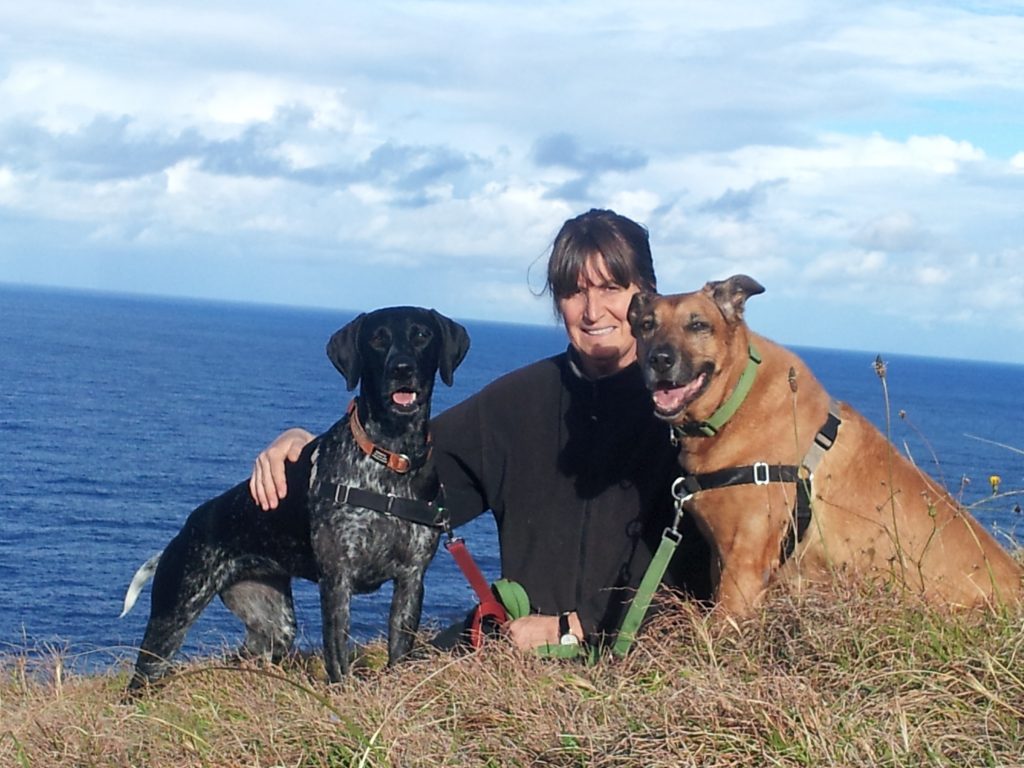
September 2022: Goodog is in the process of updating this page, return shortly for the latest thoughts about balanced training.
Balanced dog trainers are popping up right left and centre. But what does ‘balanced’ dog training mean? Sounds good, doesn’t it?
Balanced trainers define themselves (and I try to keep this objective) as using all four quadrants in operant learning. I will not go into the details but what distinguishes them from force free trainers like me, is that they will use tools such as check, prong and shock collars; or (positive) punishment such as yelling, jerking, hitting as they see fit. Most ‘balanced’ trainers will use (positive) reinforcement such as praise, interaction, treats as well. They will also say that the four options are all suitable for training, depending on the situation. To be fair, most will try to use positive punishment as little as possible.
If they tell you that upfront, it is then obviously your choice if you want to go ahead with this kind of training or not. There is no law against this and it is still very common. Their argument is that with positive reinforcement only, you are unable to train a dog. Guess what I do agree! In addition to reinforcing and rewarding the good things, you need to manage and set up for success. I am not going to watch my dog bark, run off or harass another dog. I will also not watch my puppy chew up the furniture or my hands. But my approach to teaching is based on mutual respect and trust. I will not force my dogs to do things but I will TEACH. This is not the same thing.
Positive trainers like me use a lot of management tools such as confinement areas, careful supervision, management and a lot of reinforcement based training. I will also break it down into small steps so the dog has every chance to succeed. And yes sometimes we get it wrong and the dog does the wrong thing. We are all just humans. In these instances we use; ‘interrupt’ calmly with their name, ‘redirect’ meaning ask for an acceptable alternative behaviour and ‘reward’. Be careful, if you have to use this too often you are just training a behaviour chain. This means you teach the dog to first jump up then sit to get a treat. This also means you are being reactive (sorry the pun) and not proactive.
I have made a choice for ethical and moral reasons not to use positive punishment (I will also not use negative reinforcement just to be clear). I know positive punishment can work to suppress behaviour and the trainer is not teaching an acceptable alternative. Positive punishment can be detrimental to a dog’s wellbeing and affect the bond and trust.
If I have to make a choice between a seemingly quick fix and a lasting and trustful relationship, I am always choosing the later. I am following a few of the balanced trainers for different reasons and I am really trying to understand their reasoning. However their argument does not cut it and is not convincing. One is asking for case studies to prove that punishment can have severe side effect and attempts to make the point that science does not support the claim, however then proceeds to say that he has case studies to prove the opposite (here you go: Eileen Dogs or Psychology Today). Well that is classic, anecdotal evidence and is not science. Another one goes on to describe the problems we can create when ‘training in drive’ caused in his example by the use of toys in training. Then he changes tack and blames food to create too much drive. While there is the odd Labrador that goes ‘crazy’ for food there is an easy solution to that, just use lower value food. Problem solved. In my experience, food is actually calming most dogs down! They also seem to miss that perception is changing on what are acceptable ways of treating other beings. It was ok to use corporal punishment in schools until the 1970’s in Australia, not any more.
But the real give away about ‘balanced’ trainers is the language they use and the vitriol against positive trainers; calling the positive trainers a cult, extremists and more – just to mention the ones that can be used in a professional context.
I am very passionate about no PAIN, no FORCE, no FEAR but I am not slandering, intimidating or swearing when discussing the ‘balanced’ approach. I am trying to understand and reason within socially accepted norms. It is 2016!